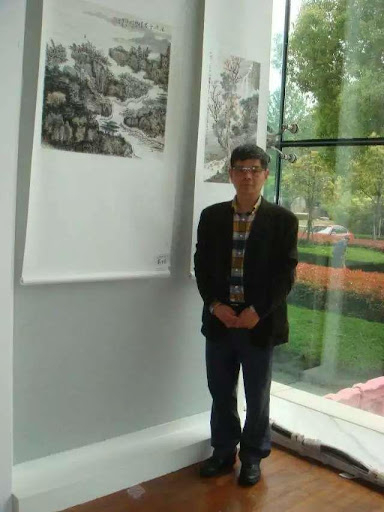
When it comes to art, there is a delicate balance between tradition and innovation that hallmarks artistic brilliance. Chinese landscape artist Cailiang Yu epitomizes this equilibrium, weaving time-honored techniques with avant-garde collaborations to redefine the landscape art genre. With a spirit of exploration and a commitment to expanding artistic horizons, Yu's collaborative efforts resonate with the transformative potential of unity, driving a progressive shift within the landscape art industry.
Drawing on Tradition, Crafting Modern Narratives
Yu's artistry transcends visual representation, serving as a medium for deep emotional connection. His works are a collection of brushstrokes and a complex tapestry of feelings and ideas expressed through visually stunning and emotionally resonant elements, often described as eloquent pastoral narratives. In today's era of creative exploration, Yu places a high value on diligence, often considered more important than raw talent. He is a keen observer of life and nature, and these observations serve as a vital inspiration for his art.
Crafting Collaborative Symphony
The uniqueness of Yu's art comes from his mastery of his craft rather than a deliberate design. Such expertise allows him to blend disparate images into a harmonious whole, creating a balanced and compelling visual narrative.
The artist also pays meticulous attention to the arrangement of elements in his compositions. He ensures that each element is placed according to its natural growth patterns and the needs of the composition, thereby creating an ordered harmony free from confusion and chaos.
Collaboration as a Catalyst for Creative Renaissance
Yu's work draws from the rich legacy of Chinese landscape painting, but he is not content with mere emulation. He actively collaborates with art luminaries to bring fresh perspectives into this traditional art form. One such notable collaboration is with the artist Chen Peiqiu, who was often acclaimed as the foremost Chinese woman painter, where they successfully merged classical techniques with modern viewpoints.
In addition to working with established artists, Yu also focuses on intergenerational collaborations. He curates exhibitions that feature works from artists across different age groups, ensuring the inheritance of artistic wisdom and fostering a culture of shared creativity.
Breathing Life through Technology and Advocacy
As an artist, he is not limited to traditional art forms; he is also an avid explorer of technological mediums. His innovative use of digital technology in ink painting has resulted in interactive canvases that captivate modern audiences, breaking the barriers of traditional art forms.
Beyond the canvas, Yu's artistry extends to societal issues. His collaboration with Tibetan artist Tang Tianyuan is a shining example of how art can unify. This partnership bridges cultural and social differences, highlighting the commitment to using art as a medium for social change.
A Legacy of Unity and Progress
Yu's work is often perceived as an individual expression, but it is a collective endeavor that shapes the future of landscape art. His strategic collaborations catalyze redefining the genre, proving that the intersection of tradition and modernity can yield extraordinary results.
As Yu continues to forge new paths, he also reshapes Chinese art's current landscape and influences its future. His commitment to unity and progress ensures that the artistic wisdom of the past is not just preserved but is transformed and adapted for future generations. This makes his work a model for how innovation can rejuvenate and move an entire industry forward.
Author bio
Shao Qi is an internationally well-known art critic, an associate professor at China Academy of Art, and the editor of the journal "Chinese Painting Research Quarterly." He has authored several influential books, including "Notes from the Studio," "Context and Semantics of Chinese Painting Tradition," "Selected Works of Shanghai Calligraphy and Painting Masters," and "Brief History of Ancient Chinese Design Thought," among others.


